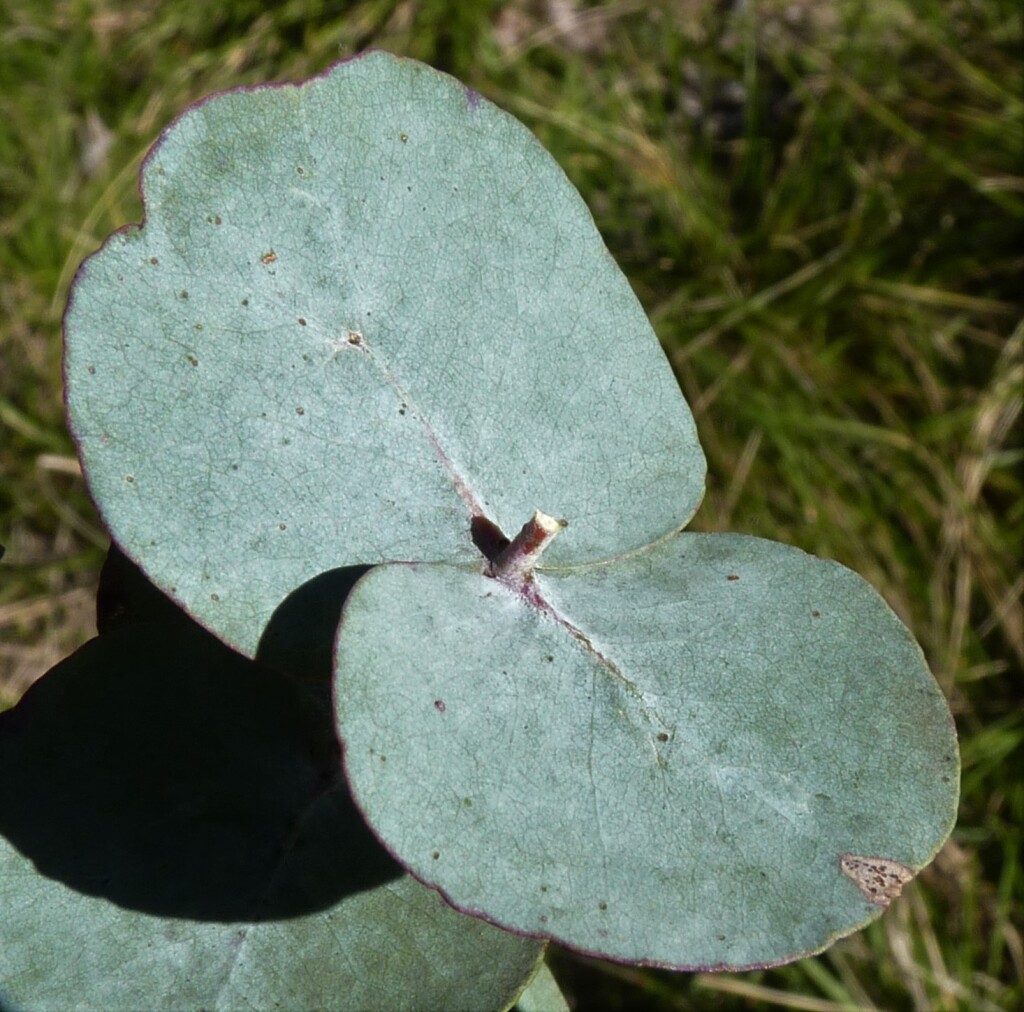Eucalyptus rubida
H.Deane & Maiden CandlebarkTree to 35 m tall; bark smooth, white, shedding in reddish strips and slabs which may remain held loosely to the trunk which often has black horizontal insect scars. Younger branchelets with or without wax. Juvenile leaves sessile, opposite for many nodes, orbicular, to 6 cm long, 5 cm wide, glaucous; adult leaves petiolate, alternate, lanceolate, 9–15 cm long, 1–2.4 cm wide, concolorous, dull or glossy, maturing slate grey; reticulation dense, with scattered, often obscure, oil glands. Inflorescences axillary, unbranched; peduncles to 0.8 cm long, 3(rarely 7)-flowered; buds shortly pedicellate, ovoid, to 0.7 cm long, 0.4 cm diam., scar present; operculum conical, more or less equal to hypanthium, with or without wax; stamens irregularly flexed; anthers dorsifixed, cuneate; ovules in 4 vertical rows; flowers white. Fruit sessile to shortly pedicellate, cupular or hemispherical, to 0.6 cm long, 0.7 cm diam.; disc slightly ascending; valves 3 or 4, exserted; seed black, flattened-ellipsoid, shallowly reticulate, lacunose, hilum ventral. Flowers Nov.–Feb.
VVP, VRiv, GipP, Gold, CVU, GGr, NIS, EGL, EGU, HSF, HNF, MonT, HFE, VAlp. Usually a tree of dryish shallow soils in the foothills and ranges mostly north of the Great Dividing Range from near Halls Gap east to Mt Delegate.
Close to Eucalyptus dalrympleana but distinguished by its poorer form, much more glaucous juvenile leaves and the grey-green mature canopy. The reddish colour of shedding bark and the presence of black insect scars also help distinguish E. rubida. Plants with 7-flowered inflorescences occur occasionally and these have been referred to by others as subsp. septemflora.
Brooker, M.I.H.; Slee, A.V. (1996). Eucalyptus. In: Walsh, N.G.; Entwisle, T.J., Flora of Victoria Vol. 3, Dicotyledons Winteraceae to Myrtaceae, pp. 946–1009. Inkata Press, Melbourne.
 Spinning
Spinning

